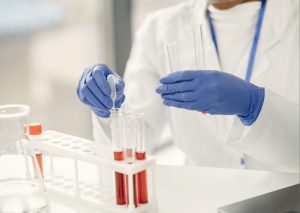 The Appellant, Arthrogen GMBH, recently filed an Appeal with the Delhi High Court, requesting the Court to set aside the order dated November 28, 2019, passed by the Respondent (Indian Patent Office) in Patent Application 11377/DELNP/2012 titled ‘GELSOLIN ENRICHMENT OF BLOOD SAMPLES USING GOLD ‘. The Respondent has rejected the invention as non-patentable under Section 3(j) and 3(i) of the Indian Patent Act.
The Appellant, Arthrogen GMBH, recently filed an Appeal with the Delhi High Court, requesting the Court to set aside the order dated November 28, 2019, passed by the Respondent (Indian Patent Office) in Patent Application 11377/DELNP/2012 titled ‘GELSOLIN ENRICHMENT OF BLOOD SAMPLES USING GOLD ‘. The Respondent has rejected the invention as non-patentable under Section 3(j) and 3(i) of the Indian Patent Act.
The appellant submitted that it is pertinent to note that section 3(j) of the Act wasn’t even included as a ground for objection in the hearing notice. Therefore, because of the failure to raise this objection in the hearing notice, the appellant was deprived of the opportunity to adequately address and revise the claims in response. Regarding objection under section 3(i) of the Act, Respondent No. 2 has failed to note that the appellant had not made any claim that “then blood or blood serum is used for autologous or homologous blood transfusion”. Respondent No. 2 has also failed to see the difference between “method of treatment” and “method for producing a substance or composition which may have a specific use in a method of surgery, therapy or diagnosis”, and the present invention falls under the latter category.
Further, the appellant submitted that the abovementioned contention is further supported by the fact that a Patent with respect to the present invention has been granted by the Patent Office of the European Union. Similar to section 3(i) of the Act, even Article 53(c) of the European Patent Convention prohibits patents for “methods for treatment of the human or animal body by surgery or therapy and diagnostic methods practised on the human or animal body”. Despite this, the Patent Office of the European Union determined that the present invention does not fall under ‘methods of treatment’, thereby allowing the grant of a patent. Respondent No. 2 argued that the claims, as worded, indicate that they are methods for the treatment of human beings and, therefore, are non-patentable under Section 3(i) of the Act.
The High Court noted that the hearing notice dated September 13, 2019, issued by Respondent No. 2, did not raise any objection under Section 3(j) of the Act, which is one of the grounds for rejecting the application. Therefore, the Court stated that the appellant could not contest the ground. Thus, there is an evident violation of the principles of natural justice.
Regarding objection under section 3(i) of the Act, the Court noted that the claims of the appellant’s invention clearly articulate a method for producing a protein-enriched blood serum using gold particles. This process is claimed to be an innovative method that results in a novel composition—protein-enriched blood serum. The potential use of this serum could be for autologous or homologous blood transfusion. However, that is an application of the product rather than the claimed invention itself. Therefore, the invention does not claim a “method of treatment” but rather a “method of producing” a specific substance, a significant distinction affecting its patentability.
The Court stated that Respondent has failed to take note that “the protein enriched blood or blood serum is used for autologous or homologous blood transfusion”1 is not part of the claims, and the Respondent’s failure to recognise this distinction has led to an erroneous application of section 3(i) of the Act. It overlooked that the process itself, as claimed, is directed towards the production of a novel composition and not towards the direct treatment of human beings or animals. The Court concluded that the objection under section 3(i) of the Act should be reconsidered in light of the clear distinction between a method of treatment and a method of producing a novel substance, and the appellant’s invention falls squarely within the latter category.
The impugned order dated November 28, 2019, was set aside by the Court, and the matter has been remanded to the Respondents for de novo consideration. The Court directed that the patent application for the subject patent be restored to its original number, and the appellant shall be granted a hearing before deciding the matter afresh. The notice of such a hearing must delineate the objection(s), if any. Additionally, the Court directed the Respondent that the decision thereon shall be rendered within four months from the date of the conclusion of the hearing. The Court asked the Respondent to decide the application without being influenced by any observations made in the impugned order, and all rights and contentions of the parties were left open.
Authors: Manisha Singh and Preeti Tyagi
First Published By: IP STARS here



